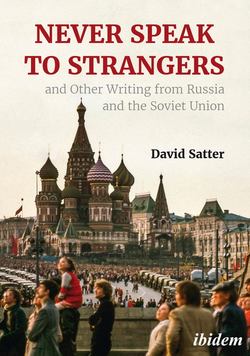Читать книгу Never Speak to Strangers and Other Writing from Russia and the Soviet Union - David Satter - Страница 14
На сайте Литреса книга снята с продажи.
ОглавлениеERZEUGT DURCH JUTOH - BITTE REGISTRIEREN SIE SICH, UM DIESE ZEILE ZU ENTFERNEN
Financial Times, Tuesday, September 20, 1977
Holidays in Russia
Taking a Healthy Rest
The Soviet masses are once again trickling away from the summer resorts, back to school and factory. The biggest exodus will come from Sochi, the country’s principal health resort and unofficial capital of the “Russian Riviera,” where at the height of the season holiday makers were arriving at a rate of over 50 trainloads and 100 flights a day.
Developed in the 1930s as a resort for working people, Sochi today extends for hundreds of miles along the Black Sea. It is a place of gardens, cypresses and palm trees, crowds milling along the promenades and rows of modern high rise sanatoria and rest houses.
Sochi offers the distractions of any seaside resort, notably miles of coast. But it also prides itself on being a “city of health.” Of the 3m. visitors to Sochi last year, over lm. received some form of medical treatment.
The rest homes and sanatoria were originally built because of the proximity of the Matsesta hydrogen sulphide mineral springs, now the basis for the Soviet Union’s largest physiotherapeutic establishment, where 6m. treatments a year are given for diseases of the joints, heart, skin, and nervous system.
Life in the lush, subtropical spa has two different sides. The sanatoria and rest homes are run by Soviet trade unions and represent the organised side. Besides medical treatment in the sanatoria, they generally provide semi-private rooms, landscaped grounds, exercise and recreational facilities, and a secluded stretch of private beach.
But most of the hundreds of thousands who pour into Sochi at the height of the season do not stay in the rest homes or sanatoria. These “wild people,” as the Soviet press calls them participate in the unorganised side of Sochi life—a world of cots in private homes for roubles 1.50 a night, busy arcades, long queues at restaurants and waterfront cafes, and beaches so crowded that there is hardly room to sit.
The Black Sea has the warmest sea water in the Soviet Union. Summer weather there lasts from May until November. The novelty particularly for visitors from Siberia and the far north, whose fares to Sochi are frequently government-subsidised, may be why the air and water temperature are continually announced over public address systems. As a change, visitors can take an interest in the radio and poster propaganda campaign against alcoholism and smoking.
Treatment
The Metallurg Sanatorium, which serves Soviet engineering workers, specialises in treating cardiovascular and neurological ailments. Treatment begins at 8 a.m. each morning for half a day with special exercises, examinations, treatment, diet and trips to take the waters of the Matsesta springs.
“Wild people” who do not get a place in a sanatorium can buy a treatment entitling them to use a sanatorium clinic and its other facilities. Packages can even be purchased following a medical examination at the Sochi railway station, provided by an on duty doctor for new arrivals, just getting off the train.
Sochi grew up around the idea of organised rest, but because of the attraction to individual visitors to the Black Sea coast and the Matsesta waters, the “wild” side of life grew up along with it. Demand for places in rest homes and sanatoria in the Soviet Union is now several times greater than the supply, and no programme of major resort construction is currently under way.
Although there can be more than 600,000 visitors to Sochi at any given time during the season, there are only 200.000 rest home or sanatoria places. This shortage gives rise to the two different ways of vacation life. The difference is visible from one of the hydrofoils which regularly carry passengers between the resorts up and down the coast. From several miles out to sea, the green foothills of the Caucasus mountains form a backdrop to a chequered pattern where densely crowded beaches alternate with the beaches of the rest homes and sanatoria which appear all but empty by comparison.
The sanatoria or rest homes are inexpensive. In the Metallurg Sanatorium, the maximum cost of four days of treatment and rest costs 160 roubles (£127) of which roubles 48 (£38) is paid by the patient, the rest by his trade union. Places are frequently apportioned by an organisation on the basis of that organisation’s own needs Individuals who work in different ministries or organisations, even if they happen to be married to each other, are frequently given different packaged vacations, at different places and different times. Only about 30 per cent of those in the Sochi sanatoria or rest homes come with their families, compared with an estimated 90 per cent of these who come to Sochi under their own steam.
At the height if the season Sochi is a mix of Russians, Armenians, Georgians, Ukrainians, and Tatars, and feels like the summer crossroads of the Soviet Union. Those who cannot get places at the rest homes or sanatoria make arrangements with the private owners whose wooden cottages line the shaded by-ways and streets. Typical “wild people” live four in a room, and either reserve places by writing in advance or make arrangements on arrival with a landlady waiting at the railway station or through the nearby apartment bureau.
Sponsored visitors and the “wild people,” as well as the foreign tourists who make up a third and growing category of Sochi holiday makers, seem to co-exist happily.
